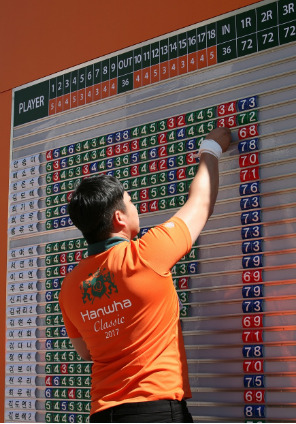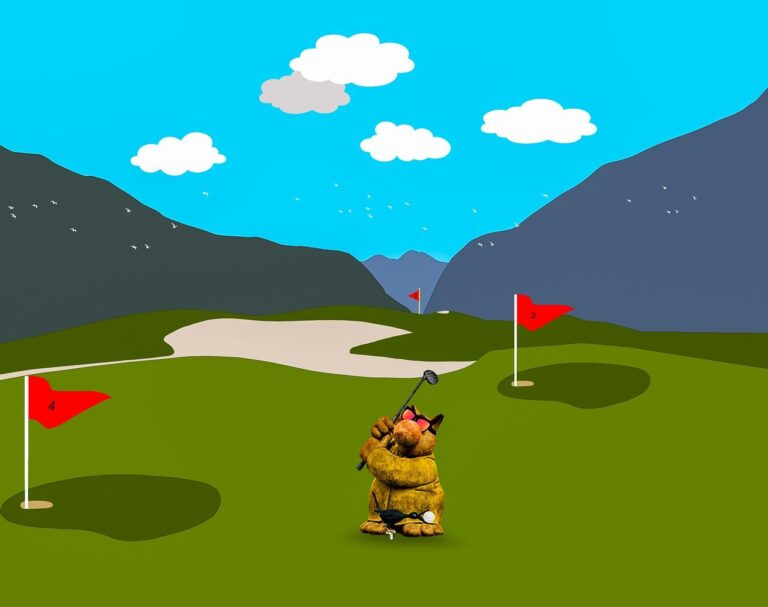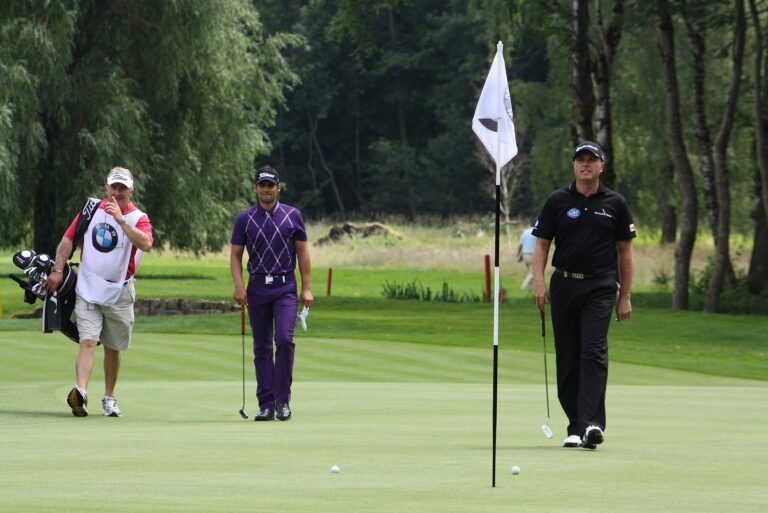what is the green in golf?
If you are new to golf, you might be wondering what the green is and why it is so important. The green, or the putting green, is the area of the golf course where the hole and the flagstick are located. It is the final destination of every golf hole, where you try to putt the ball into the hole.
The green is usually made of very short and smooth grass that allows the ball to roll easily and predictably. However, the green can also have different shapes, sizes, slopes and contours that challenge your putting skills.
In this post, we will explain everything you need to know about the green in golf, including its definition, characteristics, maintenance, etiquette and types.
what is the green in golf – Definition of the Green in Golf
According to the Rules of Golf, written and maintained by the USGA and R&A, the green is defined as:
The area on the hole you are playing that is specially prepared for putting, or the Committee has defined as the putting green (such as when a temporary green is used).
Rule 13-Putting green.
The green is one of the five defined areas of the course, along with the tee area, the general area, penalty areas and bunkers. The green for a hole contains the hole into which you try to play a ball. The greens for all other holes (which you are not playing at the time) are called wrong greens and are part of the general area.
The edge of a green is defined by where it can be seen that the specially prepared area starts (such as where the grass has been distinctly cut to show the edge), unless the Committee defines the edge in a different way (such as by using a line or dots).
There are specific rules that apply to the green, such as how to mark and lift your ball, how to repair damage on the green, how to deal with loose impediments and movable obstructions, how to handle interference by an abnormal course condition or an immovable obstruction.
Also, how to remove sand and loose soil on the green, how to replace a ball that moves after being lifted or replaced, how to play from a wrong green, how to deal with a ball that comes to rest against or moves with the flagstick in or out of the hole, and how to determine when a ball is holed.
You can find more details about these rules in Rule 13 of the Rules of Golf.
Characteristics of the Green in Golf
The green is usually the most carefully maintained part of the golf course, as it affects the quality and outcome of your putts. The green has several characteristics that influence its playability and difficulty, such as:
Size: The size of a green can vary from 100 to 500 square meters, depending on the design and layout of the hole. A larger green can offer more pin positions and more room for error, but it can also make your putts longer and harder to judge.
Shape: The shape of a green can be oval, oblong, circular, triangular or any other form that fits the hole. The shape of a green can affect how you approach it from different angles and distances, as well as how you read its breaks and slopes.
Elevation: The elevation of a green can be level with the fairway or raised above it. A raised green can make your approach shots more difficult, as you need more loft and accuracy to land your ball on it. A raised green can also affect how your ball rolls on it, as it can be faster downhill and slower uphill.
Slope: The slope of a green is the degree of inclination or decline that it has from one side to another or from front to back. The slope of a green can make your putts break left or right or speed up or slow down depending on its direction and angle. You need to read the slope of a green carefully before you putt to align your ball correctly and choose
Contour: The contour of a green is the shape and variation of its surface, such as humps, bumps, ridges, tiers, plateaus or hollows. The contour of a green can affect how your ball rolls on it, as it can change its direction and speed depending on its height and curvature. You need to read the contour of a green carefully before you putt to adjust your aim and pace accordingly.
Maintenance of the Green in Golf

The green is the most delicate and demanding part of the golf course, as it requires a lot of work and skill to keep it in optimal condition.
The green is usually made of a thin carpet of grass, such as bentgrass, bermudagrass or poa annua, that is mowed very short and frequently to create a smooth and even surface. The green is also watered, fertilized, aerated, topdressed, rolled and weeded regularly to maintain its health and quality.
The maintenance of the green is usually done by a team of professionals called greenkeepers, who are led by a head greenkeeper. The greenkeepers are responsible for ensuring that the green is playable and fair for all golfers, as well as aesthetically pleasing and environmentally friendly.
The greenkeepers have to follow certain standards and guidelines for the green, such as its speed, firmness, smoothness, color and uniformity.
The speed of a green is measured by a device called a stimpmeter, which indicates how far a ball rolls on the green after being released from a fixed height. The speed of a green can vary from 6 to 12 feet on the stimpmeter scale, depending on the type of grass, the height of the cut, the moisture level, the soil type and the weather conditions.
A faster green can make your putts more challenging, as you need less force and more touch to control your ball. A slower green can make your putts easier, as you need more force and less touch to move your ball.
The firmness of a green is measured by a device called a trufirm meter, which indicates how much a ball bounces on the green after being dropped from a fixed height. The firmness of a green can vary from soft to hard, depending on the type of grass, the amount of water, the depth of the roots, the compaction of the soil and the weather conditions.
A firmer green can make your approach shots more difficult, as you need more spin and accuracy to stop your ball on it. A softer green can make your approach shots easier, as you need less spin and accuracy to land your ball on it.
The smoothness of a green is measured by a device called a greenscan meter, which indicates how much deviation or bumpiness there is on the surface of the green. The smoothness of a green can vary from rough to smooth, depending on the type of grass, the frequency of mowing, the quality of rolling, the presence of weeds or diseases and the weather conditions. A smoother green can make your putts more predictable, as you can rely on your ball rolling straight and true. A rougher green can make your putts more unpredictable, as you have to account for your ball bouncing or skidding off course.
The color and uniformity of a green are measured by visual inspection or by using devices such as colorimeters or spectrometers. The color and uniformity of a green can vary from light to dark or from patchy to consistent, depending on the type of grass, the amount of fertilizer, the exposure to sunlight or shade, the occurrence of pests or fungi and the weather conditions.
A darker or more consistent green can indicate a healthier and more resilient grass that can withstand stress and wear better. A lighter or more patchy green can indicate a weaker or more stressed grass that can be more prone to damage or disease.
Etiquette on the Green in Golf
The green is not only the most important part of the golf course but also the most respectful part. There are certain rules of etiquette that you should follow when you are on or near the green to show courtesy and consideration to other golfers and to preserve the condition of the green. Some of the etiquette rules on the green are:
Mark and lift your ball: When you reach the green, you should mark the position of your ball with a small coin or a plastic marker and then lift it gently to clean it or to get it out of the way of another player’s putt. You should not touch or move your ball on the green without marking it first, as this is a penalty. You should also not mark or lift your ball until it is your turn to play, unless you are asked to do so by another player.
Repair any damage: When you are on the green, you should repair any damage that you or your ball have caused, such as pitch marks, spike marks, divots or scrapes. You should use a pitchfork or a tee to gently lift and smooth the turf around the pitch mark, and then tap it down with your putter.
You should not twist or dig the pitchfork into the ground, as this can damage the roots and worsen the condition of the green. You should also repair any damage that you see on the green, even if you did not cause it, as this is a sign of good sportsmanship and care for the course.
Remove loose impediments and movable obstructions: When you are on the green, you are allowed to remove any loose impediments (such as leaves, twigs, stones or insects) and movable obstructions (such as rakes, bottles, cans or scorecards) that might interfere with your putt or your line of sight.
You should use your hand or a club to pick up or move these objects away from your ball or your line of putt. You should not use your putter to sweep or drag these objects across the green, as this can damage the surface and affect other players’ putts.
Tend or remove the flagstick: When you are on the green, you can ask another player to tend or remove the flagstick for you if it might help you see the hole better or avoid hitting it with your ball. You should communicate clearly with the other player about when to hold, move or take out the flagstick.
You should also make sure that the flagstick is placed back in the hole properly after you finish putting. You should not touch or move the flagstick while your ball is in motion, as this is a penalty. You should also not leave the flagstick lying on the ground or leaning against your bag or cart, as this can damage the green or interfere with other players’ putts.
Avoid stepping on other players’ lines: When you are on the green, you should avoid stepping on or near other players’ lines of putt, which are the imaginary paths that their balls will take to reach the hole. You should walk around or behind their lines, and keep a reasonable distance from their balls.
You should also avoid casting a shadow over their lines or making any noise or movement that might distract them while they are putting. You should respect their concentration and give them space and silence to make their putts.
Be ready to play: When you are on the green, you should be ready to play when it is your turn. You should read the green and plan your putt while other players are putting, and not wait until it is your turn to start doing so. You should also have your ball marked and cleaned, and your putter in hand before it is your turn.
You should not take too much time to make your putt, as this can slow down the pace of play and annoy other players. You should also not make any practice strokes on the green, as this can damage the surface and affect other players’ putts.
Be courteous and respectful: When you are on the green, you should be courteous and respectful to other players and to the green itself. You should congratulate or compliment other players on their good putts, and not criticize or mock them on their bad ones.
You should also not celebrate or complain too loudly or excessively, as this can be rude or distracting to other players. Again, you should also not litter or spit on the green, as this can be disgusting and harmful to the grass.
Finally, you should not use your putter to point, gesture or write on the green, as this can damage the surface and leave marks.
Types of Greens in Golf
There are different types of greens in golf, depending on their design, construction and maintenance. Some of the common types of greens are:
Push-up greens: These are the oldest and simplest type of greens, which are built by pushing up the existing soil and shaping it into a mound. They are usually small, round and flat, and have poor drainage and aeration. They are also prone to compaction, erosion and weed invasion. They require frequent watering, fertilizing and topdressing to keep them healthy and playable.
Sand-based greens: These are the most common and modern type of greens, which are built by laying a layer of sand over a gravel base and then covering it with turf. They are usually large, irregular and contoured, and have good drainage and aeration.
They are also resistant to compaction, erosion and weed invasion. They require less watering, fertilizing and topdressing than push-up greens, but more mowing, rolling and aerating to keep them smooth and firm.
Soil-based greens: These are a hybrid type of greens, which are built by mixing sand with the existing soil and then shaping it into a mound. They are usually medium-sized, oval or oblong and slightly sloped, and have moderate drainage and aeration.
They are also less prone to compaction, erosion and weed invasion than push-up greens, but more than sand-based greens. They require more watering, fertilizing and topdressing than sand-based greens, but less than push-up greens.
Artificial greens: These are a synthetic type of greens, which are made of plastic or rubber materials that mimic the appearance and feel of natural grass. They are usually small, round and flat, and have no drainage or aeration. They are also immune to compaction, erosion and weed invasion.
They require no watering, fertilizing or topdressing, but occasional brushing or vacuuming to keep them clean and playable.
Conclusion

The green is one of the most important and interesting parts of the golf course, as it is where you finish each hole and where you score most of your strokes. The green has many aspects that affect its playability and difficulty, such as its size, shape, elevation, slope and contour.
The green also requires a lot of care and skill to maintain its condition and quality, such as mowing, watering, fertilizing, aerating, topdressing, rolling and weeding.
Also, The green has certain rules of etiquette that you should follow to show respect and courtesy to other players and to the green itself, such as marking and lifting your ball, repairing any damage, removing any loose impediments or movable obstructions, tending or removing the flagstick, avoiding stepping on other players’ lines, being ready to play, and being courteous






